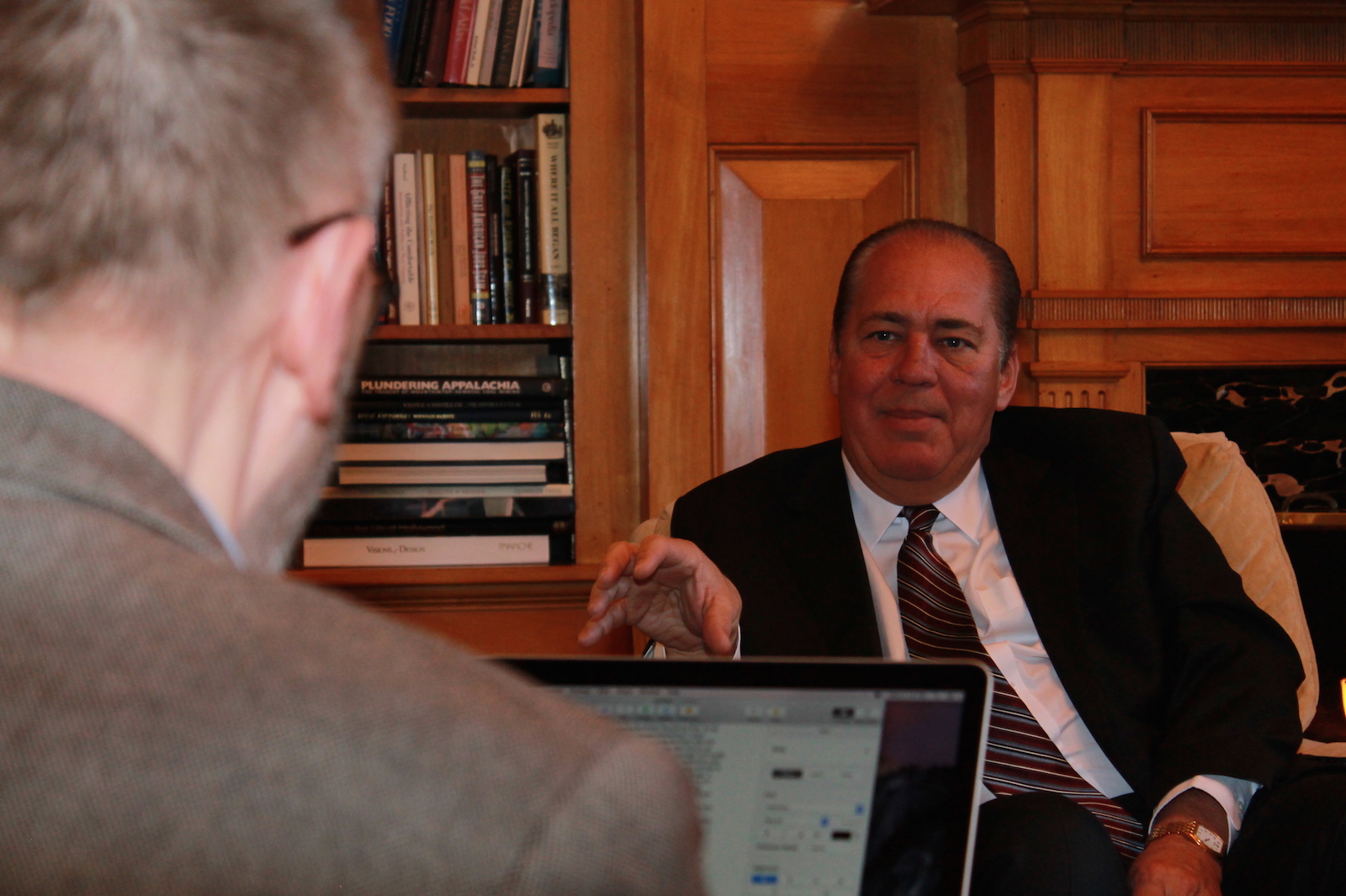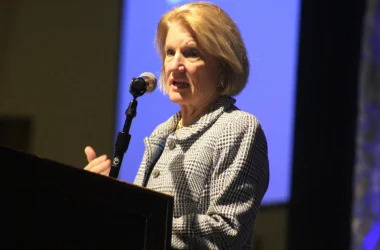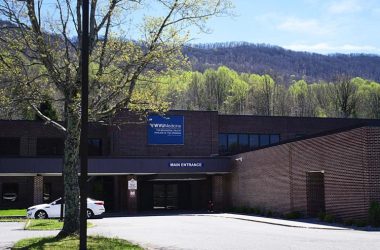By George Hohmann
For the W.Va. Press Association

CHARLESTON, W.Va. — If you’re a West Virginian looking for work or thinking about it, Gov. Earl Ray Tomblin has a message for you: “There’s money available to almost do anything to get you back as a work-producing citizen again.”
For example, long-term unemployment benefits available to laid-off miners — and spouses and children of jobless miners — “will help you pay for tuition, transportation, child care and meals,” Tomblin said.
The governor said that jobs and education will continue to be among his administration’s top priorities during the 2016 legislative session.
WorkForce West Virginia, which provides employment resources, has 50 programs and about $40 million in federal money available to help retrain displaced workers and those affected by long-term unemployment.
The agency has 13 career centers throughout the state and interacts with more than 100,000 West Virginians every year. But Tomblin and Russell Fry, WorkForce’s acting executive director, want to do more.
“We have thousands of coal miners who have lost their jobs,” Fry said. “We’re trying to retrain them, get them into other skills. If they can get the skills we can find the jobs. If they’ve been a year without any wages, we’re going to try to track them down and see if we can help them.”
Help isn’t limited to laid-off miners. In fact, assistance is available for people from almost every background and situation. A few examples cited during a Jan. 5 meeting of the Workforce Planning Council, a cabinet-level group Tomblin created to coordinate the state’s efforts:
* Billy Wayne Bailey, deputy secretary of the state Department of Veterans Assistance, said, “We’re encouraging veterans to apply for the GI Bill and go for advanced training. It’s shocking how many will sit around for two or three years and leave $80,000 in the bank because they let their GI Bill expire.”
* Karen Bowling, secretary of the Department of Health & Human Resources, said the agency partnered with Southern West Virginia Community and Technical College last year to help recipients of Temporary Assistance for Needy Families benefits become self-sufficient.
“We did an analysis and found this population had special needs — transportation, additional support, remedial classes,” she said. “Many were eligible for financial aid and didn’t know it.”
Under the program, Southern hired a liaison to get clients enrolled in appropriate classes. “Twenty seven entered the program in the fall,” Bowling said. “Twenty three — 85 percent — completed the program. We’re going to look at funding liaisons at four more community and technical colleges.”
* Kay Goodwin, secretary of the state Department of Education and the Arts, said it has been determined that drug use is a disability, which means the Division of Rehabilitation Services can use federal funds for rehabilitation programs.
* Tomblin said the state Division of Corrections has partnered with numerous state agencies to develop the Offender Reentry Initiative, which addresses prisoners’ health, mental health, job skills, education, substance abuse and other issues. The goal is to help prisoners succeed when they are released.
Only 5.5 percent of the nearly 7,000 prisoners in West Virginia are serving life sentences, which means the vast majority will one day return to communities across the state.
Keith Burdette, secretary of the state Department of Commerce, said, “Once upon a time businesses looking at coming into the state wanted to talk about workers’ compensation and taxes. The truth is, every single recruit now wants to talk about the workforce and whether it can expand with them. And the companies that are already here now say, ‘We love your workforce but we’re concerned about the depth of your bench.”
* Carolyn Stuart, executive director of the state’s Herbert Henderson Office of Minority Affairs, said the office has been promoting its annual Minority Business Expo. Last year’s event, held in Charleston in October, attracted 68 businesses, 300 attendees and students from seven schools. Three or four business owners walked away from the expo with contracts, she said.
Tomblin said, “We need every worker we can get in West Virginia and it will take all of us to get our people the skills they need.”
In addition to the money committed to training and re-training, the state is investing nearly $100 million a year in Promise scholarships, need-based scholarships and tuition reimbursement for National Guard members, Tomblin said.
Among the education programs:
* At BridgeValley Community and Technical College in South Charleston, students can work part-time at Toyota’s plant in Putnam County and go to school part time to earn a two-year Advanced Manufacturing Technician degree.
* The state Department of Education is turning some career and technical classrooms into simulated workplaces aimed at giving students work experiences that focus on work ethics, safety, drug testing, professionalism, teamwork, leadership and customer service.
* Sarah Tucker, chancellor of the state’s Community and Technical College System, highlighted the system’s internship program, where students enrolled in college are simultaneously working for a business.
“The state and business partners pay for the program 50-50,” she said. “Participants include Kureha Corp., The Dow Chemical Co., Gestamp. We’re finding great success in the graduation of our students. And they’re getting hired right out of school by these companies.”
Tomblin said, “We’ve got to let these kids and families know there’s available money out there, whether they need a technical program, a two-year certificate or whether its going on to higher education.”
West Virginia is dealing with difficult education, employment and budget issues.
Although West Virginia is among the top states in per-person spending on education, it ranks among the lowest with college graduates in the workforce.
West Virginia and Nevada have a 6.5 percent unemployment rate, the highest in the nation. West Virginia has the nation’s lowest workforce participation rate.
The state Department of Revenue estimates West Virginia will finish the current budget year on June 30 with a $353 million budget deficit.






